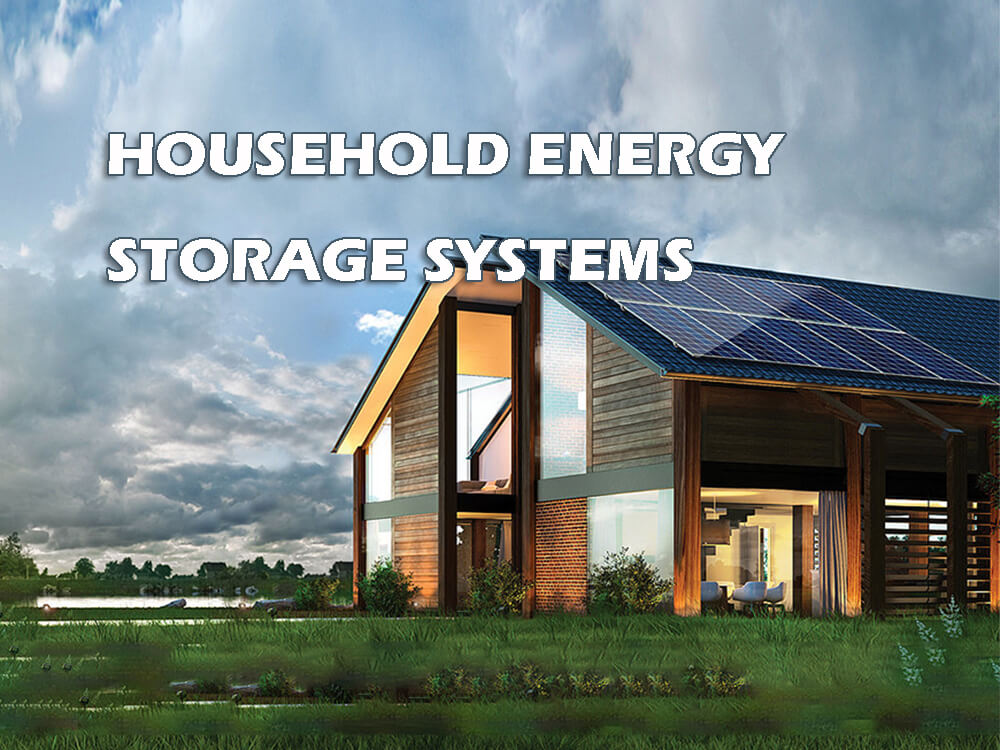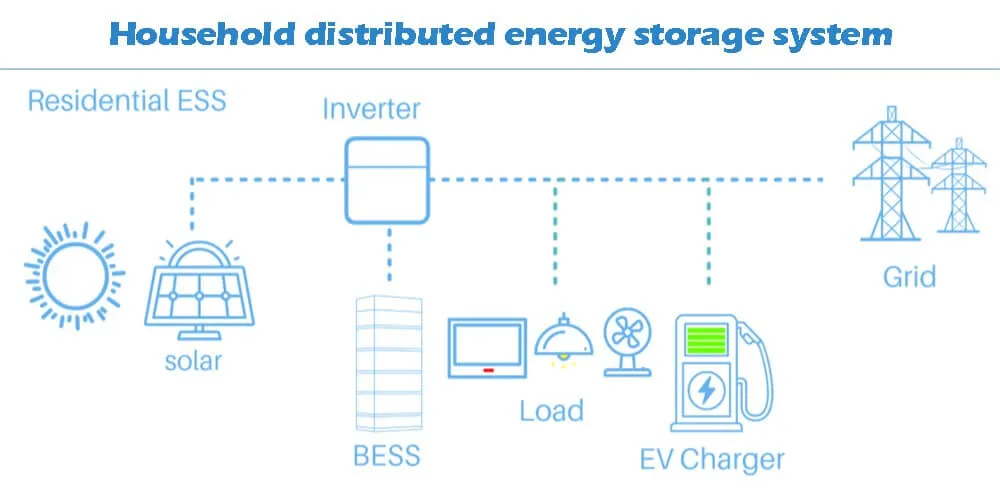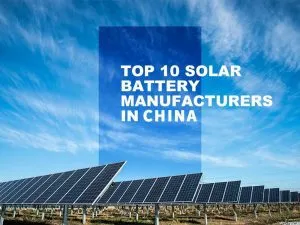Comprehensive analysis of household energy storage systems - what is it like

The household energy storage systems, what is it like? This article will analyze from the aspects of product type, technical route, business model, pricing model, and demand volume.
You can learn more about related companies from the top 10 powerwall manufacturers for home energy storage.
The core components of household energy storage systems
Household energy storage system is a necessary aid for distributed energy systems.
The core of the household solar storage system is photovoltaic + battery + energy storage inverter. Household energy storage systems and household photovoltaics are combined to form a household optical storage system. The optical storage system mainly includes cells, energy storage inverters (bidirectional converters), and component systems.
A typical system is generally 5KW (component + inverter) with 10kWh (energy storage battery) or 10kW + 10kWh, of which the battery is the core of the energy storage system, accounting for about 45-50% of the cost;
The energy storage converter can control charge and discharge, and convert AC to DC, and the cost accounts for about 10-15%; the component system, that is, the photovoltaic system, is used for solar power generation. The cost accounts for about 20-25%; the installation cost will rise from 10,000 in 2021 to about 20,000, accounting for 15-20%.
Product type
Household energy storage systems products include integrated and distributed.
● Integrated energy storage system:
The home-style photovoltaic energy storage and inverter integrated machine is an integrated system with photovoltaic inverter, battery and controller placed inside. The working status can be displayed quickly and intuitively through the touch screen, the parameters can be modified and various working modes can be used, which is convenient to use. Generally, there are three working modes: solar energy priority mode, AC (mains) priority mode, and SE priority mode (off-peak power consumption mode).
● Distributed energy storage system (inverter + battery system):
The household distributed energy storage system battery is installed separately from the inverter. Users can match the household energy storage inverter according to their own needs, and can also match the switching power supply or inverter as a backup power supply.
Generally, there are four types of hybrid home photovoltaic + energy storage systems, coupled home photovoltaic + energy storage systems, off-grid home photovoltaic + energy storage systems, and photovoltaic energy storage energy management systems.
Technical route
The mainstream technology route of household energy storage systems is lithium iron phosphate, and sodium ion and lithium iron manganese are new paths in the future.
The technical route of energy storage battery includes lithium ion solar battery, lead battery, flow battery, etc.
At present, lithium iron phosphate batteries are more in line with the design requirements of energy storage batteries than ternary lithium batteries due to their high safety and long cycle life. It is the mainstream development route of energy storage batteries, and Tesla as top 5 energy storage battery companies have gradually shifted from the ternary route to the iron-lithium route.
In addition, some companies such as CATL, Pylontech, etc. are already conducting research and development and testing of sodium ion and lithium iron manganese batteries. We expect that the technical route of energy storage batteries is expected to be further improved in the future.
| Serial number | Technical route | Companies |
| Lithium-ion batteries | Ternary lithium | Tesla, LG, SAMSUNG, SONY |
| Lithium iron | Tesla, LG, CATL, BYD, EVE, Higee, Lishen, CALB, SHANSHAN, Powin Energy, Fluence | |
| PYLONTECH, Dyness, Alpha, FOX, ATL | ||
| LTO | Microvast, Gree | |
| LMO | Xingheng | |
| Flow batteries | All vanadium flow, zinc bromine flow | Puneng energy |
| Other types | Supercapacitors, Ladder Batteries | Maxwell,EMDE,SVOLT |
Business model
The sales model includes direct sales and distribution, brand and channel building advantages. The sales models of the three types of players in the household energy storage systems industry chain are as follows:
● Cell/storage inverter suppliers:
Divided into To C and To B, To C generally integrates home storage systems, builds its own channels, promotes its own brands, and has certain consumption attributes. To B is a general product supplier, selling products to integrators, without consumption attributes, and earning material costs and processing fees.
● System integrators:
Do not have complete product production capacity, can purchase batteries or energy storage inverters, and some companies produce certain components by themselves to do simple system product integration, however, there are channel sales resources and rely on existing channels to cooperate with local distributors and installers.
● Distributors/installers:
Connect with upstream integrators, deliver to end users after installation and construction, and earn commissions for sales and installation fees.
| Sales method | Type of company | Company Name |
| Direct sales | Complete system supplier | Tesla |
| Distribution | Battery supplier | Pylontech, BYD, Greatpower |
| Panasonic,LG | ||
| Parts manufacturer | ALPHA, FOXESS, DYNESS, UZ | |
| Energy storage inverter manufacturers | Goodway,Ginlong,Deye,Sungrow,KEHUA | |
| PV manufacturers | JinKo,Longi,Trina | |
| Dealer/Installer | Sonnen,E3/DC |
Pricing model
The price difference of household energy storage systems is the largest in the world, higher than that of industrial and commercial energy storage and MW-level energy storage. Other countries are nearly 133% higher than China (based on the highest price). The CIF price is the main price, and the seller bears the main risk.
At present, the price of household storage products within 30kWh is 1.0-1.5 RMB/Wh in China, and the price in other countries is 2.0-3.5 RMB/Wh, including the battery cell, BMS, shell, and connecting wire harness with 10-year warranty.
There are four kinds of quotations: EXW ex-factory price, FOB quotation, CIF quotation and DDP quotation. The quotation consists of goods pricing, accessories and FOB/CIF/DDP. At present, CIF offers are in the majority, and sellers take higher risks.
In other countries, the terminal price is higher, and the dealer and installer will increase the price by 30%-50%. At present, China’s pricing is relatively low, with a guaranteed 20%-30% gross profit. The gross profit of an all-in-one machine is higher than that of only selling batteries or inverters. Under the pricing model of other countries, labor wages and travel expenses in other countries increase the cost, and in addition, about 5% of repair/after-sales expenses should be considered. The sales price in other countries is increased by 30-50% by the dealer and the installer respectively.
Demand volume
The demand for household energy storage systems is growing rapidly, with a year-on-year increase of 56% in 2021. According to data, the global installed capacity of energy storage in 2021 will be about 10GW/22GWh, a year-on-year increase of 84%/105%.
Among them, the installed capacity of distributed energy storage is about 2.5GW/5.6GWh, a year-on-year increase of 45%/40%. The installed capacity of household storage in distributed energy storage is about 1.9GW/4.4GWh, a year-on-year increase of about 53%/56%. Global household storage is booming.
The main driving factors come from two aspects, one is the continuous increase of policy support, and the other is the economic drive of high returns. Tax reduction and exemption + capital subsidies provide policy support, and household electricity prices continue to rise and household storage economy improves. Countries around the world have launched relevant policies to incentivize household energy storage system installations.
Relevant policies can be divided into indirect tax relief and direct capital subsidies, thereby reducing the cost of household storage installation. In addition, under the trend of rising household electricity prices in other countries, installing household storage for self-use can save more electricity expenses. The rate of return continues to increase, which stimulates the continuous increase in the installed capacity of household energy storage systems.
Demand analysis of household energy storage systems
In 2022, due to the rising energy costs and electricity prices in Europe, superimposed on the Russian-Ukrainian war and large-scale power outages, residential electricity costs are high and power supply stability is poor, resulting in a high increase in household photovoltaics, which in turn brings the household energy storage market beyond expectations. break out.
High cost of electricity
Under the energy crisis, the cost of electricity consumption in many countries continues to rise. In recent years, electricity prices in European and American countries have been rising year by year, and due to events such as the Russian-Ukrainian conflict, the cost of natural gas has soared, and the cost of electricity prices has risen rapidly in the short term.
The average spot market price in Europe has risen from about 50 euros/MWh at the end of 2019 to a maximum of more than 300 euros/MWh, and the electricity prices of European countries in May 2022 will increase by 100-330% compared with the beginning of 2021. It is predicted that basic energy prices in European economies such as France, Germany, Belgium and the Netherlands will remain high at around 150-170 EUR/MWh throughout 2022.
The per capita electricity consumption of Canada, the United States, South Korea and other countries far exceeds that of China. Among the major household storage countries, the United States, Germany, and Australia will consume 12,235/9,857/6,771KWh of electricity per capita in 2020, far exceeding China’s per capita consumption of 5,297KWh.
As electricity prices continue to rise, the demand for self-generated renewable energy and energy storage in many countries has grown rapidly.
Weak power grid coordination
Many countries are affected by extreme weather + weak power grid coordination, and residents have poor power supply stability. Household storage can provide emergency power in the event of power plant accidents or extreme natural disasters, improving the stability of electricity consumption.
In recent years, various large-scale power outages have occurred in many countries. According to statistics, the average power outage time per customer in the United States in 2020 is as high as 492 hours, of which the outage time caused by major events such as severe weather and emergencies is 373 hours. In 2022, a power plant accident occurred in Taiwan, China, affecting 5.49 million households and losing 10.5 million kilowatts, accounting for about 1/3 of Taiwan’s electricity.
Tax relief and other support policies
Relevant policies can be mainly divided into two categories. One is to implement relevant tax reductions and exemptions. For example, Italy has increased the tax reduction of home storage equipment to 110%. The United States will grant up to 30% investment tax relief for energy storage systems above 5kWh until 2026;
The other category is the implementation of financial subsidies. For example, Japan provides a 66% cost subsidy for households and businesses that install lithium-ion batteries, and the German state of Bavaria provides a subsidy of 500 euros ($550) for each energy storage system with a capacity of more than 3kWh.
High yield
The rate of return of household savings is relatively high, and the rate of return can reach more than 15% without considering the subsidy, and the payback period is within 6-9 years. Countries such as Germany and the United States, which are at the forefront of the development of household energy storage systems in the world, have higher yields due to their high electricity prices.
Newly installed capacity of household storage in the world
In 2021, the installed capacity of new households in the world will be 1.91GW/4.36GWh, an increase of 56% in terms of MWh. At present, household energy storage is mainly concentrated in countries or regions with high electricity prices. Among them, Germany, the United States, Japan and Australia account for 74.8% of household energy storage systems.
The global household storage penetration rate is expected to increase rapidly. It is expected that the household storage penetration rate is expected to reach 28% by 2025. Among them, the United States and Europe are the two most important growth points. It is expected that the penetration rate of household savings in the United States is expected to increase from 8% in 2021 to 36% in 2025. The penetration rate of household savings in Europe is expected to increase from 8% in 2021 to 56% in 2025.
The global installed capacity of household energy storage is expected to reach 50GW/122.2GWh in 2025, and household energy storage systems in the United States and Europe is growing rapidly.
It is expected that household energy storage systems will usher in a high growth rate. By 2025, the global installed capacity of household energy storage is expected to reach 50GW/122.2GWh, and the CAGR from 2021 to 2025 will reach 126%/130%. In 2025, the global household energy storage shipment will be 80GW/195.5GWh, and the CAGR will reach 126%/130% in 2021-2025.
Among them, the installed capacity of household energy storage systems in the United States/Europe is 18.2/73.1GWh, respectively, and the CAGR in the United States and Europe from 2021 to 2025 is 112% and 145%, respectively.































